Conflict Zones
Ukraine accuses Russia of launching bombs after Putin’s 3-day truce begins | Russia-Ukraine war News
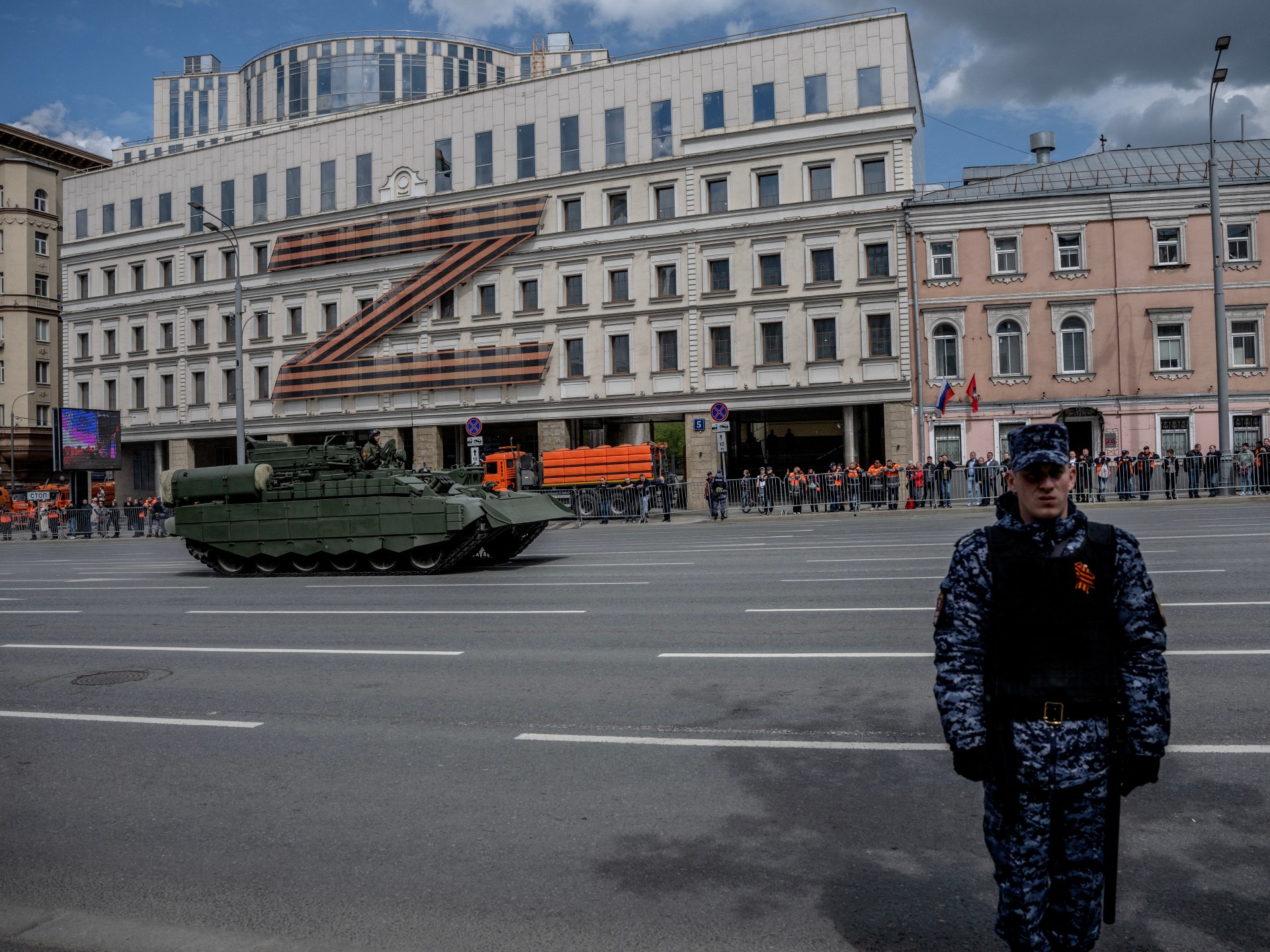
Ukraine’s Zelenskyy has not committed to abide by the measure, standing by his offer of a 30-day ceasefire.
Ukraine has accused Russia of bombing the Sumy region after the latter’s unilaterally declared three-day ceasefire started.
Ukraine’s air force said on Thursday that Russian aircraft launched guided bombs on the Sumy region of northern Ukraine three times after midnight local time (21:00 GMT), when Vladimir Putin’s May 8-10 ceasefire entered into force.
The Kremlin has claimed the brief ceasefire – coinciding with the 80th anniversary of the Soviet Union’s victory over Nazi Germany in World War II – will “test” Kyiv’s readiness for peace but Ukraine has slammed it as a farce.
Ukrainian President Volodymyr Zelenskyy, who has not committed to abide by the truce, insisted on Wednesday that his country stood by its offer to observe a 30-day ceasefire in the war with Russia.
“We are not withdrawing this proposal, which could give diplomacy a chance,” Zelenskyy said in his nightly video address. Russia, he said, had made no response to the 30-day offer except for new strikes.
The United States, which has placed both countries under pressure to make peace, proposed the 30-day ceasefire in March, but Moscow said the measure could only be introduced after mechanisms to enforce and uphold it are put in place, later proposing the three-day truce as a “humanitarian” gesture.
Military parade
Apart from the two launches of guided bombs, there were no reports in Ukraine of any Russian long-range drones or missiles being launched on Ukrainian cities, Ukraine’s air force said on Thursday.
But Ukraine declared an air alert in its seven eastern regions, stating that there is a danger of Russia using ballistic missiles despite the Kremlin’s ceasefire, the air force added.
The Kremlin has said Russian forces will honour Putin’s order for the duration of the holiday, but will respond “immediately” if Ukraine launches any fire.
As part of the anniversary events, Russian President Vladimir Putin is hosting Chinese President Xi Jinping and other leaders in Moscow and will review a military parade on Moscow’s Red Square on May 9.
Hours before Putin’s order was scheduled to enter force, Moscow and Kyiv staged aerial attacks, prompting airport closures in Russia and killing at least two people in Ukraine.
In Wednesday’s video address, Zelenskyy also appeared to acknowledge Ukraine’s targeting of Russian sites as the World War II commemorations approached.
“It is absolutely fair that Russian skies, the skies of the aggressor, are also not calm today, in a mirror-like way,” he said.
Conflict Zones
Have India and Pakistan started a drone war? | Drone Strikes News
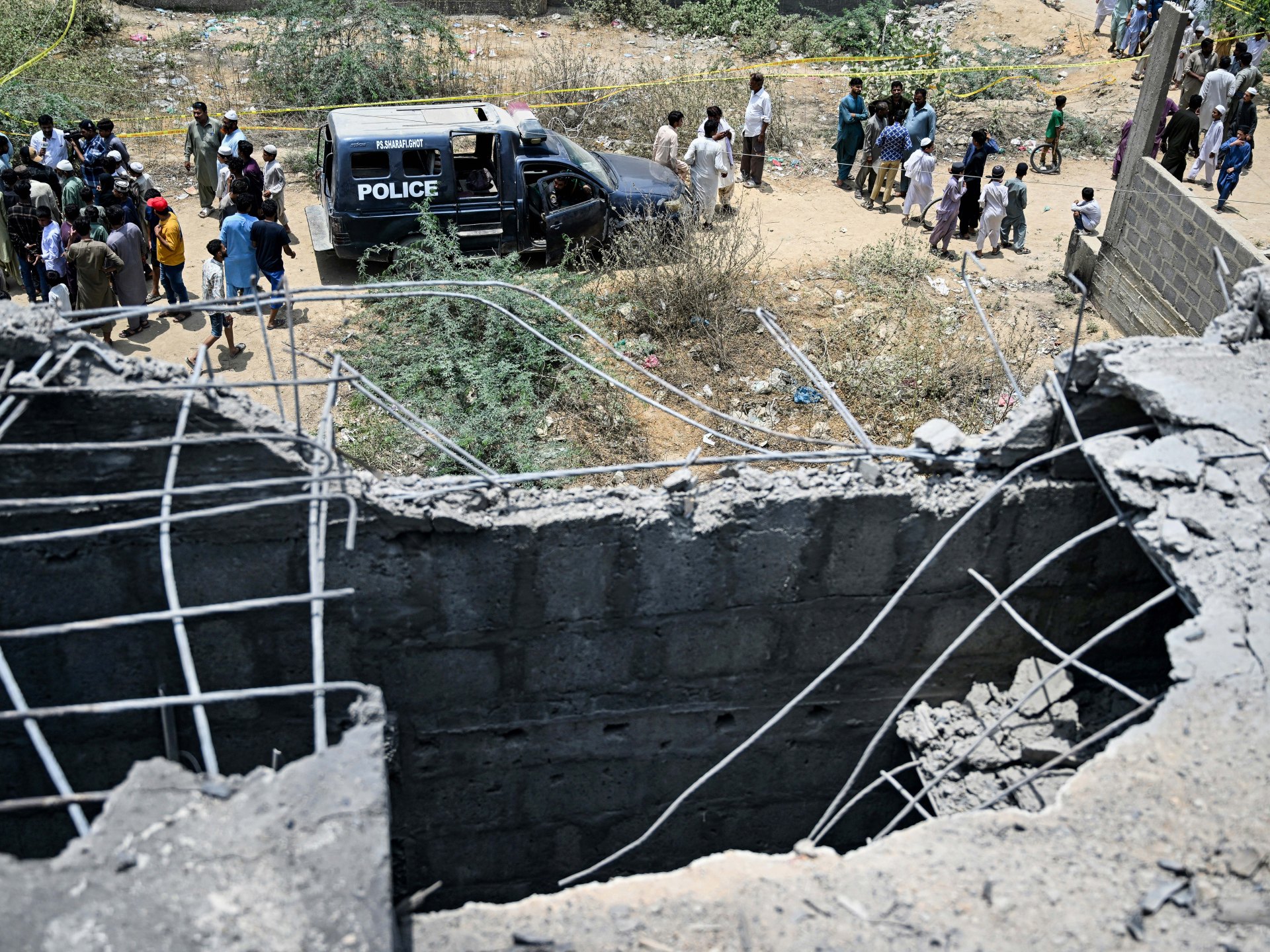
Pakistan’s military said on Thursday morning that the country’s air defence system had brought down 25 Indian drones overnight over some of the country’s chief cities, including Lahore and Karachi. At least one civilian has died, and five people were wounded, it said.
India’s Defence Ministry confirmed hours later that it had targeted Pakistan’s air defence radars and claimed that it was able to “neutralize” one defence system in Lahore. It said Pakistan had attempted to attack India and Indian-administered Kashmir with drones and missiles overnight, but that these had been shot down.
The drone attacks represent the latest escalation between the nuclear-armed neighbours, a day after India launched deadly missile strikes on Pakistan and Pakistan-administered Kashmir, killing at least 31 people, according to Islamabad. Those were the most extensive Indian strikes ever on Pakistan outside the four wars that they have fought. Heavy artillery shelling from both sides overnight caused border communities in the disputed Kashmir region to flee.
Simmering tensions erupted on April 22 after gunmen killed 25 tourists and a local pony rider in Pahalgam in Indian-administered Kashmir. India blamed Pakistan for backing fighters who claimed the attack. Islamabad has denied any involvement.
Here’s what we know about the latest escalation of drone attacks:
What happened?
In a briefing on Thursday, Pakistani army spokesman Lieutenant General Ahmad Sharif Chaudhry said the country came under attack from a wave of drones overnight, targeting many of the most populated cities, including Karachi and Lahore.
Pakistan’s air defence system intercepted and brought down these drones, he said. Pakistan’s military said 25 such drones were jammed and shot out of the sky.
The falling debris killed one civilian and injured another person in the southern Sindh province, while an additional drone targeted and wounded four soldiers in a military installation in Lahore, Chaudhry said in the news briefing. Partial damage to “military equipment” was recorded in that latter incident.
Chaudhry described the drone attacks as an act of “naked aggression” and a “serious provocation”, and pledged that Pakistan was ready to retaliate.
“It appears that India has apparently lost the plot and, rather than going on a path of rationality, is further escalating in a highly charged environment. Pakistan Armed Forces remain fully vigilant to any type of threat,” he said.

What has India said?
Hours after the drone attacks, India accepted responsibility – but insisted it had been provoked.
On the night of May 7-8, India’s Ministry of Defence said, Pakistani forces attempted to “engage a number of military targets” in multiple areas in northern and western India and Indian-administered Kashmir using “drones and missiles”. These were shot down by India’s air defence systems, the ministry said.
“Today morning Indian Armed Forces targeted Air Defence Radars and systems at a number of locations in Pakistan. Indian response has been in the same domain with same intensity as Pakistan,” the ministry’s statement said. “It has been reliably learnt that an Air Defence system at Lahore has been neutralised.”
Pakistan has not commented on Indian claims that it attempted to strike India with drones and missiles.

Where were the drones in Pakistan brought down?
In his briefing, Pakistan army spokesperson Chaudhry said drones either attacked or were shot down in the following locations:
Lahore: The capital of the eastern Punjab region, and Pakistan’s second-largest city of 14 million people. Local police official Mohammad Rizwan told reporters a drone was downed near Walton Airport, an airfield that the Pakistani military manages and uses for radars. The airport also has training schools.
Gujranwala: The fourth-largest city in Punjab, with a population of 2.5 million people.
Chakwal: Also in the Punjab region, with a population of about 1.5 million.
Rawalpindi: The city in Punjab is home to the headquarters of Pakistan’s powerful military. The city has a population of close to 6 million people.
Attock: Close to the capital, Islamabad, Attock is a cantonment city with a population of 2.1 million.
Nankana Sahib: The Punjab city has a population of just more than 100,000 but enjoys far greater significance than that number suggests: It was the birthplace of Guru Nanak, the founder of Sikhism, and is one of the holiest sites of the faith.
Bahawalpur: Also in Punjab, it has a population of nearly one million.
Miano: A town in Sindh province, housing a major oil field.
Chor: A small town in the Umerkot district of the southeastern province of Sindh.
Ghotki: A city in northern Sindh known for its date palms, with a population of about 120,000.
Karachi: Pakistan’s most populous city of 20 million people is based in Sindh.
Which cities did India claim Pakistan was targeting?
India said Pakistani missiles and drones attempted to strike 15 cities and towns but that all were brought down.
Awantipora: A town of 12,000 people, on the Jhelum River in Indian-administered Kashmir.
Srinagar: The biggest city in the Kashmir valley, Srinagar has a population of 1.2 million people.
Jammu: The winter capital of Indian-administered Kashmir, it has a population of 500,000 people.
Pathankot: Also in Indian-administered Kashmir, Pathankot is a major nerve centre of the Indian army’s operations. It is home to the largest military base in Asia.
Amritsar: The city in India’s Punjab state has a population of 1.1 million and is home to the Golden Temple, one of Sikhism’s holiest shrines.
Kapurthala: A smaller town of 100,000 people in Indian Punjab.
Jalandhar: Right next to Kapurthala, Jalandhar has a population of nearly 900,000.
Ludhiana: The most populous city in Indian Punjab is home to 1.6 million people.
Adampur: The Punjab town is tiny, with just 20,000 people. But it is home to India’s second-largest air force base.
Bhatinda: The city in Indian Punjab has a population of nearly 300,000.
Chandigarh: The capital of both Indian Punjab and the neighbouring state of Haryana, Chandigarh has a population of just more than one million.
Nal: A tiny town near the India-Pakistan border in the desert state of Rajasthan, it is home to a civilian airport and an air force base.
Phalodi: A city of 66,000 people in Rajasthan, Phalodi is famous for its salt industry.
Uttarlai: A small village in Rajasthan that is home to an air force station.
Bhuj: A city of 190,000 people, Bhuj is in Gujarat, the western state of Indian Prime Minister Narendra Modi.
What drones were used in the attack on Pakistan?
Chaudhry, the Pakistani military spokesperson, identified the Indian projectiles as Harop drones.
Harop drones are a form of what are known as loitering munitions, and are developed by the Israeli government’s primary aviation manufacturer and supplier, Israel Aerospace Industries (IAI).
Loitering munitions are usually remotely controlled unmanned air vehicles (UAVs) designed to hover in the air after being deployed, waiting for a precise target to be exposed before they crash into it and self-detonate.
They are not meant to survive a confrontation, and so are also known as suicide drones or kamikaze drones.
The IAI Harop is reputed to be one of the deadliest drones because it combines ordinary UAV and missile capabilities. Spanning two metres (6.6ft) in length, the vehicle is small enough to bypass most aircraft detection systems. It can fly over a range of 200km (120 miles) and is programmed for about six hours of flight. The drone can return and land at its launch base if it fails to engage a target.
The Indian Armed Force (IAF) is one of Israel’s biggest clients for drones. Between 2009 and 2019, India bought at least 25 Harop drones, with a single sale of 10 units costing $100m, according to reporting by The Jerusalem Post.
India’s fleet also includes Searcher and Heron drones, similarly manufactured by the IAI. Searchers are typically used for reconnaissance missions, while the Heron has similar missile capabilities to the Harop.
Why are the drone attacks on Pakistan significant?
Multiple drones breaching Pakistan’s airspace, hovering in the country’s most populous regions, and managing to attack a military location imply that India has the capabilities to breach Pakistan’s air defence and strike its most crucial nerve centres.
The attacks, according to the Pakistani army, were an “extreme act of provocation” that could lead to a major escalation of violence between the two nuclear powers.
Additionally, the drone breach poses a potential threat to civil aviation safety in Pakistan.
The country’s civil aviation authorities temporarily suspended operations in four airports on Thursday, before lifting the restrictions: Allama Iqbal International Airport in Lahore, Jinnah International Airport in Karachi, Islamabad International Airport, and Sialkot International Airport.
What’s the wider context?
Kashmir, famed for its picturesque lakes, meadows and snow-capped mountains, is at the heart of tensions between the two countries.
India and Pakistan both administer parts of it, as does China. But India claims all of it, and Pakistan claims Indian-administered Kashmir, too. Three of the four previous India-Pakistan wars have been over Kashmir, which spans 22,200 sq km (8,570 square miles).
India has for years blamed Pakistan for supporting, arming, and training armed groups seeking secession from India. Pakistan has insisted it provides only moral and diplomatic support to Kashmir’s separatist movement.
New Delhi blamed April’s attack on an obscure group, The Resistance Front (TRF), and claimed it was Pakistan-backed. Islamabad, however, has denounced the attacks and denied involvement, calling for a “transparent, credible, impartial” investigation into the incident.
Both countries, with a combined population of 1.6 billion, are nuclear powers, raising fears among security experts that further escalation could be disastrous.
Conflict Zones
‘Nowhere to go’: Kashmir violence escalates amid India-Pakistan crossfire | Conflict News
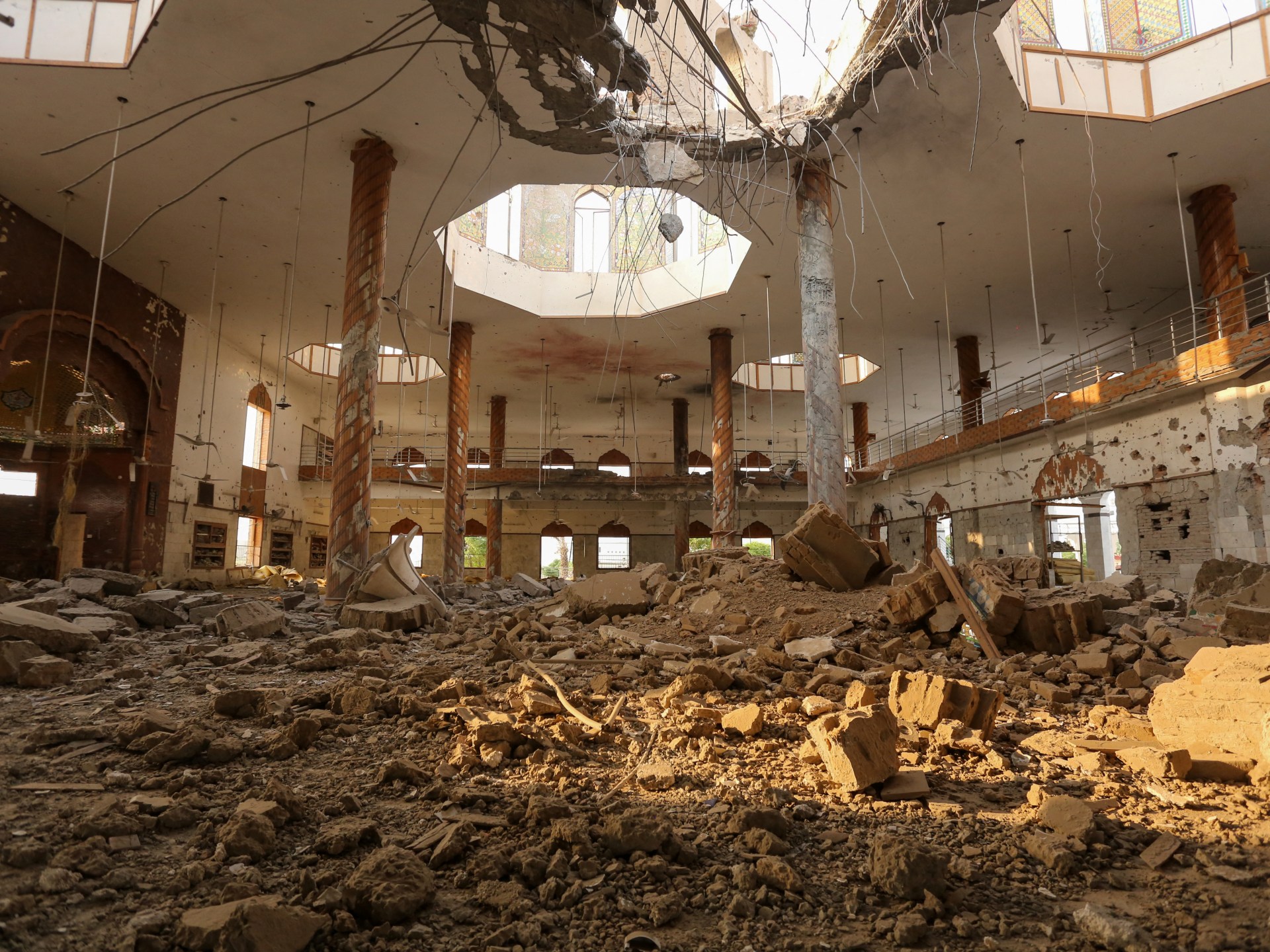
Indian and Pakistani soldiers exchanged gunfire overnight in Kashmir, a day after the worst violence between the nuclear-armed rivals in two decades.
Pakistani Prime Minister Shehbaz Sharif pledged to retaliate after India launched deadly missile attacks on Wednesday morning, with days of repeated gunfire along their border escalating into artillery shelling.
“We will avenge each drop of the blood of these martyrs,” Sharif said, in an address to the nation.
India said it had destroyed nine “terrorist camps” in Pakistan in “focused, measured and non-escalatory” strikes, two weeks after New Delhi blamed Islamabad for backing an attack on tourists in the Indian-administered side of disputed Kashmir – a charge Pakistan denies.
At least 44 deaths have been reported from both sides of the border following Wednesday’s violence, including children. Islamabad said 31 civilians were killed by Indian attacks and firing along the border. New Delhi said 13 civilians and a soldier had been killed by Pakistani fire.
The largest Indian attack was on an Islamic seminary near the Punjabi city of Bahawalpur, killing 13 people, according to the Pakistan military.
Madasar Choudhary, 29, described to the AFP news agency how his sister saw two children killed in Poonch, on the Indian side of the frontier, on Wednesday.
“She saw two children running out of her neighbour’s house and screamed for them to get back inside,” Choudhary said, narrating her account because she was too shocked to speak. “But shrapnel got to the children – and they eventually died.”
Muhammad Riaz said he and his family had been made homeless after Indian attacks hit Muzaffarabad, the main city of Pakistan-administered Kashmir.
“We have no place to live,” he told AFP. There is no space at our relatives’ house. We are very upset; we have nowhere to go.”
On Wednesday night, Pakistan military spokesman Ahmed Sharif Chaudhry reported firing across the Line of Control – the de facto border in Kashmir – and said the army had been authorised to “respond in self-defence” at a “time, place and manner of its choosing”.
India’s army on Thursday morning reported firing “small arms and artillery guns” in multiple sites overnight, adding that its soldiers had “responded proportionately”, without giving further details.
India and Pakistan have fought multiple times since the violent end of British rule in 1947, when colonial officers drew straight-line borders on maps to partition the nations, dividing communities.
Muslim-majority Kashmir – claimed by both India and Pakistan – has been a repeated flashpoint.
Conflict Zones
‘Don’t want war’: Kashmiri towns caught in deadly India-Pakistan crossfire | India-Pakistan Tensions

Srinagar, Indian-administered Kashmir – As the camera panned around a home blown up by the mortar fire in Poonch, an embattled hill city perched on the disputed border between India and Pakistan, a disembodied female voice cried out.
“This is a calamity.”
The video, shared with Al Jazeera by locals in Poonch, revealed a collapsed staircase, large craters in the walls, and a courtyard cluttered with rubble and clothes, and painted in blood.
“Everything I built is in ruins,” the voice exclaimed, loaded with anguish.
At least 11 people have been killed in Poonch district from Pakistani firing into Indian-administered Kashmir since early May 7, in retaliation for Indian missile strikes that hit multiple sites across Pakistan’s Punjab province and Pakistan-administered Kashmir.
The Indian strikes – themselves a response to a deadly attack on tourists in Indian-administered Kashmir’s Pahalgam on April 22 – mark the most extensive attack on Pakistani soil since their 1971 war that ended with the eastern wing of Pakistan lopped off, resulting in the creation of Bangladesh.
Yet, as the nuclear-armed neighbours stand on the edge of a potential military conflict, many Kashmiris say they are facing the brunt of their tensions. Pakistan’s bombardment of Indian-administered Kashmir on Wednesday night was, according to locals and experts, the most intense shelling that villages and towns in the region have seen in more than 40 years.
“This was a night of terror,” Rameez Choudhary, a resident of Poonch, told Al Jazeera.
The dead, officials told Al Jazeera, included two siblings who were crushed to death after an exploding shell dropped on their house; two local store-owners who were hit by the raining munitions; a seven-year-old child; a teenage boy; a 35-year-old homemaker; and four other men.
The worst-hit villages in Poonch district were Shahpur, Mankote and Krishna Ghati, while shelling also intensified in Rajouri district’s Laam, Manjakote, and Gambhir Brahmana areas as residents fled to safety.

‘This war has been forced upon us’
The border skirmishes have followed the deadly attack at the tourist resort town of Pahalgam in Indian-administered Kashmir two weeks ago, in which 26 people, mostly Indian visitors holidaying in the disputed region, were killed.
During the wee hours on Wednesday, Indian military warplanes arced across the skyline and fired missiles and other munitions into neighbouring Pakistan. Indian authorities said they targeted at least nine locations inside Pakistan.
India charges Pakistan with supporting the armed group that attacked Indian tourists. Pakistan, however, has denied the accusation. India claims its missiles hit “terror base camps”, but Pakistan says the strikes killed 31 people, all of whom were “innocent civilians”.
The scale and spread of the current military tensions – India struck four cities separated by hundreds of kilometres in Pakistan’s Punjab province, in addition to sites in Pakistan-administered Kashmir – make them even graver, in some ways, than the last war between the neighbours in 1999, say some experts.
Back then, servicemen from the Pakistani army had disguised themselves as rebel fighters and taken up positions in the snow-covered, craggy mountains of Kargil, territory under de facto Indian control, leading to a conflict. Hundreds of soldiers died on each side, but the battles were – unlike this week – contained to Kargil.
“This war has been forced upon us. The [Pahalgam] attack was aimed at provoking a situation in which we have no option but to strike back,” said Tara Kartha, director at the Centre for Land Warfare Studies (CLAWS), a New Delhi-based think tank, and a former official at India’s National Security Council Secretariat.
To be sure, the countries came close to war in 2019 in the aftermath of the deadly attack in Pulwama town in South Kashmir when a suicide bomber blew up an Indian paramilitary motorcade, killing 40 Indian servicemen. Indian fighter jets fired missiles that struck Balakot in Pakistan-administered Kashmir.
But according to Kartha, the current crisis is different.
“Both sides carefully managed 2019. Everything was kept confined to a certain limit. But this time, it has been brutal,” she said, while arguing that “India has been very mature”. Pakistan’s military and civilian government have, however, accused India of fanning the flames of war and escalating tensions.
Caught on the front lines of their confrontation are Kashmiris. On Wednesday, three different regions in Indian-administered Kashmir were struck by Pakistani shelling.
“Initially, we thought it was thunder. The skies rumbled at 1am,” Altaf Amin, a 22-year-old resident of Chandak village in Poonch, told Al Jazeera.

‘We don’t want war’
Poonch is just 10km (six miles) from the Line of Control (LoC), the contested border that separates the Indian- and Pakistan-controlled territories in Kashmir. “The shelling has continued on and off since yesterday. But now, it has stopped,” said Amin.
Social media was quickly flooded with videos showing the severity of the human toll in the border shelling. A clip whose veracity was authenticated by Al Jazeera shows the bloodied body of a teenage boy being carried into a van in Poonch. One of his arms had been blown apart. The different segments in the same clip showed a lifeless body of a child, his head ripped open by a shell.
Amid it all, one refrain emerged loud and clear: “We don’t want war,” said Amin.
Yet, there is also anger on the ground against local authorities.
“People in Poonch are angry because there was no attempt to get them evacuated,” Zafar Choudhary, a political analyst and veteran journalist based in the Jammu region, told Al Jazeera.
Choudhary said that the strikes from the Pakistani side should have been anticipated by the Indian government, and people should have been evacuated to avoid the casualties.
“But none of that happened, which has left people infuriated. There’s a feeling that whenever the trouble between the two warring nations has erupted in the past, it is the people of these hill regions who have borne its brunt,” he said.

Silent guns roar again
The LoC traverses a 740km (459-mile) circuitous route through the mountains, forested ridges, alpine lakes and rivers of the disputed Kashmir region. The line came into being in 1949 after the newly independent India and Pakistan fought their first war over Kashmir, which was then one of the 565 princely states ruled indirectly by colonial Britain.
As both countries rallied their militaries to claim the picturesque region, they eventually settled for a stalemate that forced them to recognise each other’s spheres of influence. The ceasefire line was given recognition by the United Nations, which tried to mediate a referendum in Kashmir so that its people could choose their future.
The vote never happened, and both nations continued to spar occasionally along the disputed border. After the 1971 war that Pakistan lost to India, the ceasefire line was renamed as the LoC. In 2003, after a more than decade-long uprising in Kashmir began to subside, and both countries initiated a peace process to ease hostilities, India took advantage of the truce period to fence off its side of LoC with spools of concertina wire.
The two countries agreed to a ceasefire deal that they renewed in 2021.
Four years later, that agreement effectively lies in tatters.

‘This shelling is unprecedented’
Amin, the villager in Chandak, said that although artillery duels have been common in the border area, the guns had fallen relatively silent since both countries reaffirmed the 2003 ceasefire deal four years ago. “We are familiar with cross-border shelling. But this shelling is unprecedented.”
Another resident from Poonch, which is where most damage has taken place, said that people there have now started following a series of war protocols announced by the government, including building makeshift bunkers.
Residents said many schools in Chandak have been converted into relief centres, with provisions of food and other essentials.
Nearly 260km (162 miles) away from Poonch district, the residents of Salamabad Uri, a border village in Baramulla district, northern Kashmir, have fled their homes, too.
“Last night, the shelling was so intense that two houses were burned down and many people were wounded in the fire from across the border,” Mushtaq Ahmad, 40, a cab driver from the village, said. Ahmad has now moved to the town of Uri.
Salamabad, which is ringed by a pine-covered massif that juts out into Pakistan, has been devastated by near-continuous shelling. Powerful blasts have ripped away corrugated iron roofs from homes, exposing them to harsh sunlight. The inferno caused by the shelling has blazed through neighbourhoods, leaving behind smouldering debris.
“We fear the worst,” said Ahmad, adding that his two daughters, aged 9 and 11, are frightened.
“They are asking why it happened? Would we be killed?” Ahmad says, adding that the cross-border shelling started at 2am on Wednesday, and left two minors – a 13-year-old girl and a four-year-old boy – wounded.
Ghulam Muhammad Chopan, an 80-year-old resident, said that he felt too old to leave his home, but that there was no other option.
“At this age, I had to leave my house. At night, the firing was so intense that by dawn, the village was empty. Everyone fled,” he said.
In Wuyan town in Pampore, a highland area surrounded by a maze of escarpments where the prized Kashmiri saffron grows, townspeople said they were jolted out of their sleep at 1:30am after they heard a loud booming sound.
“A fireball exploded with a flash,” said Gulzar Ahmad, a resident. “I could see two aircraft. One of them returned promptly. But the other one that exploded, its wreckage had fallen into a school playground. Later, it started emitting acrid smoke that drew a large crowd.”
Pakistan claims it shot down five Indian fighter jets on Wednesday morning. While multiple independent reports suggest that at least three planes were indeed shot down, India is yet to confirm any such losses.
As uncertainty lingers over the escalation of tensions between India and Pakistan, locals in Indian-administered Kashmir are fearful and uncertain about their future.
Residents have started hoarding food, fuel and other essential items, anxious and desperate to survive violence they never invited.
“War should never be rejoiced. When the shells hit, they don’t ask your identity,” said Farooq Ahmad, a resident of Kamalkote village in Uri. “Those calling for the war do not know how it feels when a shell lands on your kids when they are asleep at night.”
-
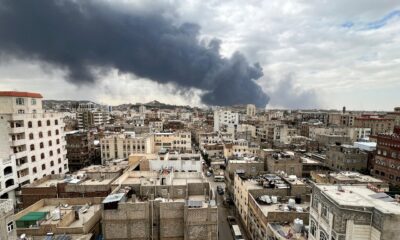
 Middle East2 days ago
Middle East2 days agoIsrael hits Yemen’s Houthi-controlled Sanaa airport in tit-for-tat attack | Houthis News
-
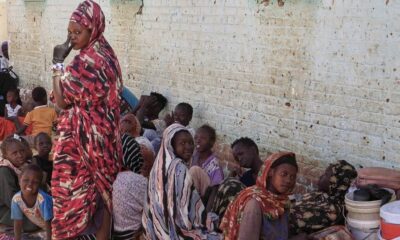
 Africa2 days ago
Africa2 days agoNew wave of Sudanese refugees flee into neighbouring Chad
-

 Europe2 days ago
Europe2 days agoTrump’s Oval Office meeting with Carney didn’t reach Zelensky-level tension. But it wasn’t all neighborliness
-

 Conflict Zones2 days ago
Conflict Zones2 days ago‘No safety guarantee’: Could Ukrainian drones target Putin’s Victory Day? | Russia-Ukraine war News
-

 Europe2 days ago
Europe2 days agoDoorDash to buy Britain’s Deliveroo for nearly $4 billion to expand its reach in Europe
-

 Lifestyle2 days ago
Lifestyle2 days agoWho were the best and worst dressed at the Met Gala?
-

 Asia2 days ago
Asia2 days agoLive updates: India launches military operation against Pakistan
-

 Asia2 days ago
Asia2 days agoIndia launches military operation against Pakistan in major escalation




